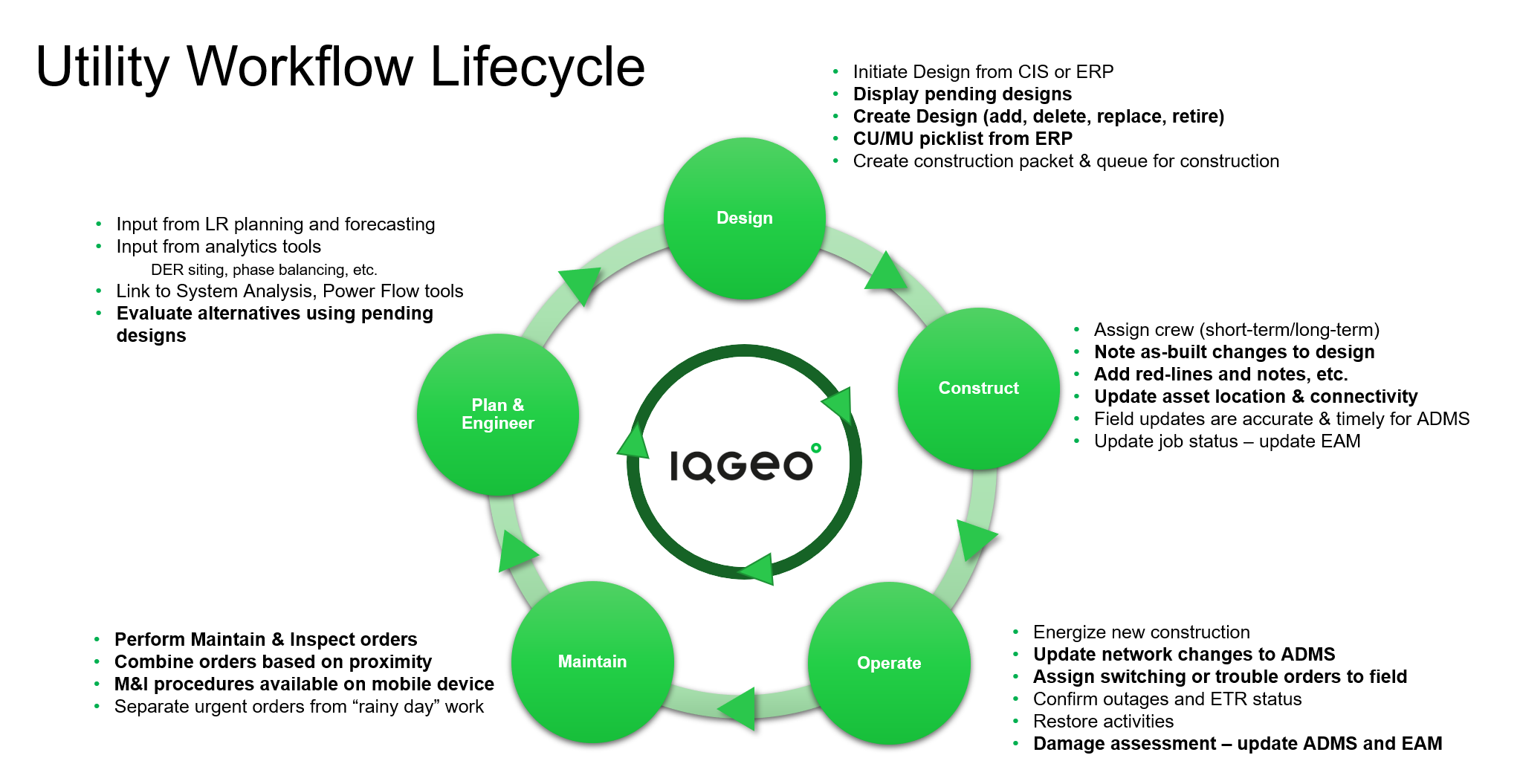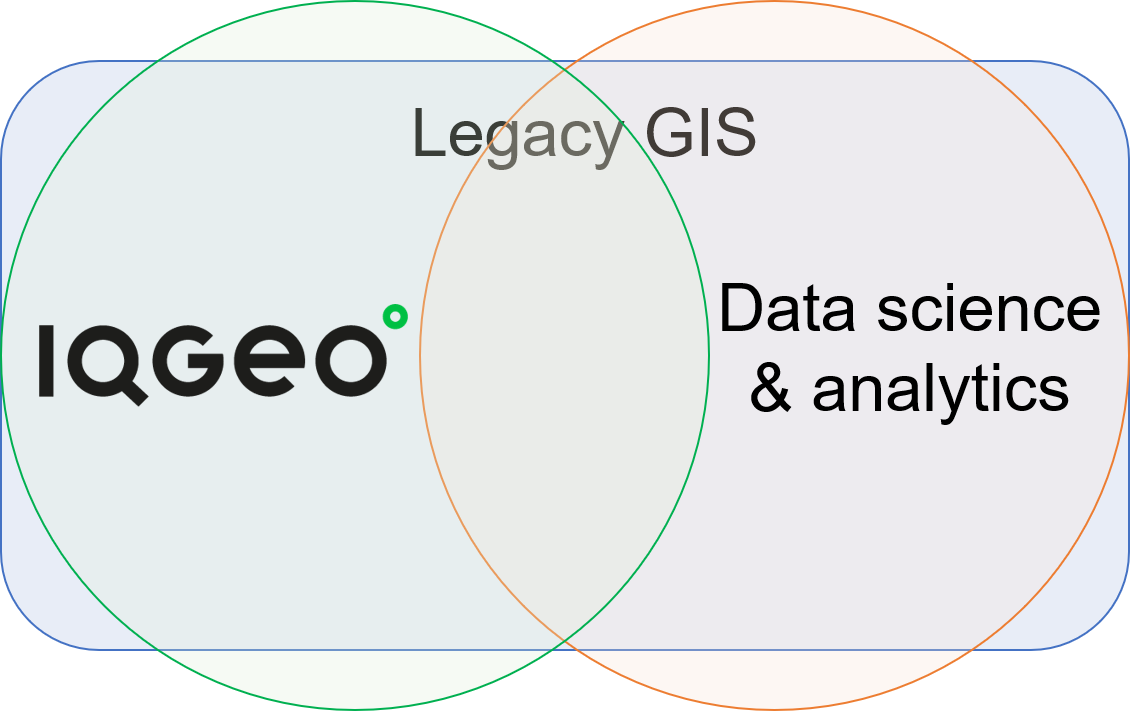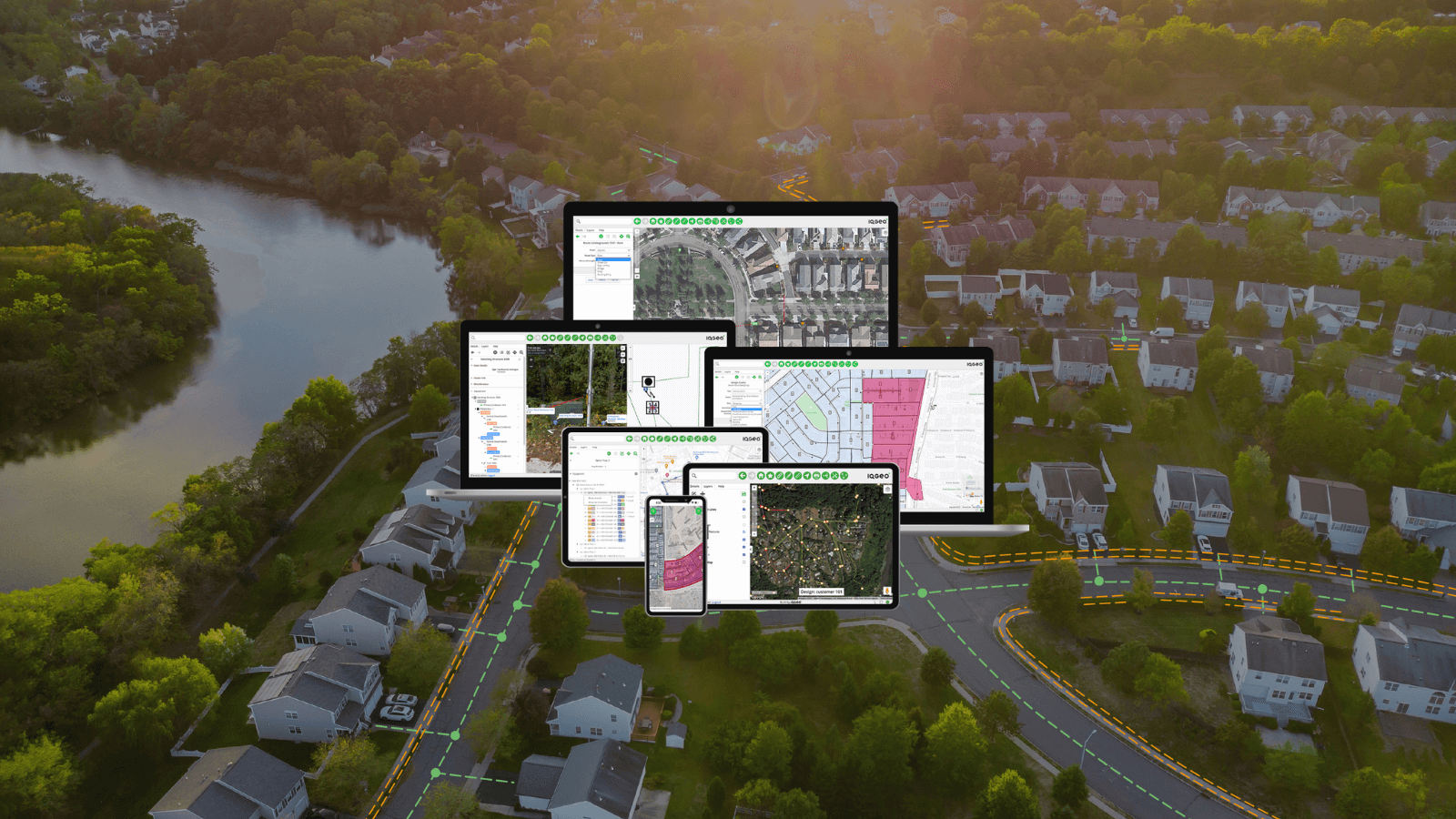Several years ago, I authored a white paper describing the next generation of GIS and how there would be more focus on business solutions vs. technologists in love. Seems that was a bit premature, but significant change is finally coming. New technology enables us to merge multiple GIS tools (desktop, editor, viewer, designer, mobile) into one platform. IQGeo has figured out how to drive geospatial network management capabilities starting with a mobile-first, field worker-first strategy. The impacts of this, when combined with other new IT technologies, is profound.
First, let’s harken back to the visionaries who took two fundamentally different paths to develop a GIS for utilities. One approach grew from automated mapping and land management and the other focused on geocoding and connecting network assets (“pipes & wires”) to emulate the real world. Neither approach provided a fulfilling overall solution and tends to break people into camps. That dichotomy persists almost forty years later, despite untold investment, re-architecting, and bolting on new functions. Along the way, the ability to streamline processes such as engineering, construction, maintenance, and operations has been achieved to some extent. However, the goal of geospatial network-enabled workflows and collaboration as envisioned hasn’t been fully realized.
While the visionaries’ concept of creating and updating enterprise data where the work is done survives, gaps remain that cause latency and accuracy errors. An example is using a GIS to create design packets and maps to be translated from digital to analog realms (paper) and back, which is both inefficient and error prone. Organizations have sprouted to prop up and service the GIS environment, when it was clearly intended to be the other way around.
We can now realize that original geospatial vision without the need for a stream of constant upgrades and large dollar outlays for systems that seem to never deliver the desired functionality. In the 2020’s, a geospatial platform shouldn’t need design modules or productivity packs. It should just be easy to use and simple to extend. It should also take advantage of other embedded smart technologies, such as ad-hoc plotting, routing, communicating, and engineering. This must avoid proprietary add-ons that do the same thing in a less user-friendly way just to lock you into a vendor’s technology stack.
As we migrate to a more fulfilling future, technology blurs the lines between field and back office workers. IQGeo can deliver greater value and embed geospatial tools in the utility business workflow as originally intended. Advances in IT architecture enable integration and business-centric data models that are accessed and updated by any worker, anywhere.
Location and connectivity data can now be supplied to this integrated model and be tailored to individual job types. For a new generation of digital-native workers, we can make mobile business apps that are recognizable and usable by anyone. Imagine enabling workers anywhere to communicate, collaborate, and keep enterprise data in sync while doing their job as described in the model below. The lifecycle steps noted in bold can be supported by IQGeo.

Technology supports the larger enterprise, performing data capture and correction, inspections, designs, damage assessment, and timely editing where the work is done. This can be achieved using any GIS vendor’s data input and distributed anywhere, on any platform, online or offline, with real-time updates. The distinction between office and field becomes irrelevant. In fact, at some point having a monolithic GIS even becomes unnecessary.
Can IQGeo really replace an enterprise GIS?
The answer to this question is a qualified ”Yes”, but not in a vacuum. It can handle the network management and workflow support of a GIS. Increasingly, the historic gaps of geospatial analysis, operational forecasts, business reports, and the creative use of enterprise data has become the realm of data scientists using powerful AI/ML tools, while essentially ignoring traditional GIS. Attend any number of utility-focused analytics conferences and you will be witness to a parade of data scientists and engineers who grab data from multiple sources, write and analytics script, and produce a geospatial report without ever knowing what a GIS is. A high-level visual representation is provided below.

Combining ease of use and powerful network modeling empowers utility personnel to own and share geospatial network data directly with other IT and OT systems without the ongoing expense and trauma of traditional GIS augmentation programs.
10 key elements of a modern GIS
Perhaps its time to put GIS back in the box, or the tablet, or the smart phone, and let it fulfill its destiny of keeping enterprise data in sync with workers. For additional thoughts on this topic, see Peter Batty’s blog, CTO at IQGeo, on 10 key elements of a modern GIS. We can now eliminate inefficiencies by providing tools that are embedded in utility workflows. Everyone benefits with more accurate, timely, synchronized information and the elimination of duplicate processes.

Former Utilities Director at IQGeo
Similar articles:

 Previous
Previous







